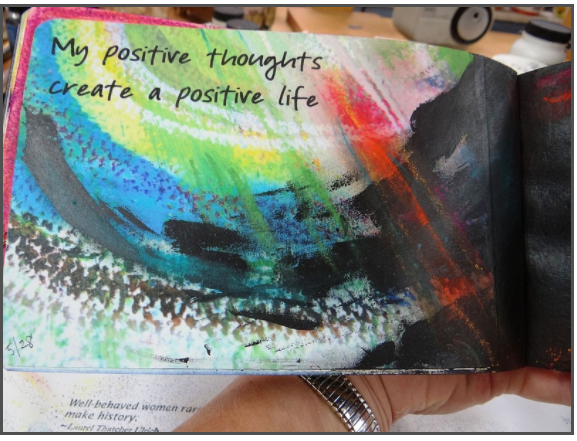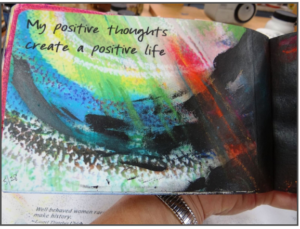
Listen to this post
A man is but the product of his thoughts.
What he thinks, he becomes. – Mahatma Gandhi
Our thoughts color every perception and filter all of our experiences. They drive our moods and our desires. They limit or loosen our imagination.
Consider placebos, by which a white lie essentially becomes a truth. Belief in the treatment creates the effect. In fact, it’s so powerful that sugar pills perceived as more expensive will pack a greater punch than those thought to be cheaper – even though they’re exactly the same.
Anticipating the experience creates it.
It isn’t a matter of being gullible. It’s certainly not about magic. It’s about a body’s response. For instance, if a person believes something will reduce pain, their body will release endorphins. Similarly, a tethered elephant calf quickly learns it can wander no further than the rope will allow and grows into a 6 ton adult that won’t even attempt to escape, though physically, nothing could be easier.
Like the elephant, we may feel bound by thought patterns shaped in early life, but as adults, we have the capacity to choose what and how we think.
One powerful, reality-shaping method we can invoke at any time is affirmation.
 Now, we’re not talking about going all Stuart Smalley and massaging your ego with corny clichés. While affirmations are a kind of positive self-talk, they’re much more than that.
Now, we’re not talking about going all Stuart Smalley and massaging your ego with corny clichés. While affirmations are a kind of positive self-talk, they’re much more than that.
They’re a tool for reprogramming the mind and establishing new beliefs that support your personal evolution and growth through both good and challenging times.
Many of us have blind spots when it comes to our negative thoughts, which is why many find it useful to work with a qualified therapist or coach. Identifying them can be an incredibly powerful act. But picking at old psychic wounds prevents healing, and neuroscience confirms this old, intuitive wisdom: Ruminating over those wounds only deepens the grooves in the brain associated with that story.
With focused intention, we can create new, better stories that help us change and grow and thrive. Robbed of their “juice,” old thoughts literally atrophy because they’ve been replaced.
Some key points in creating and using affirmations:
- They must be in the present tense: I am thriving, rather than I will thrive.
- They must be realistic. If you are trying to lose weight, focus on a weight that is achievable for you. Be realistic. Beliefs drive behavior, and behavior drives performance. Set yourself up for success by being real. And remember: If you don’t move, you’re not going to lose weight no matter how stunning your affirmation.
- Memorize your affirmation and use it often. You can set a timer on your phone or watch to remind yourself to repeat it hourly, or use it upon waking or before sleep. If you meditate, try silently repeating your affirmation to yourself as you might utter a mantra.
- Take a breathing break several times a day: Inhale deeply 12 times while silently repeating your affirmation on both the inhalation and exhalation. Your mindful, deliberate breaths helps root the thought in the body.
Two excellent resources with tips on creating affirmations:
- How to Change Your Mind and Your Life by Using Affirmations (Tiny Buddha)
- 5 Steps to Make Affirmations Work for You (Psychology Today)
Remember, to be useful, affirmations need to be specific, authentic and believable. Like visualizations, they must be accompanied by action.
What we are today comes from our thoughts of yesterday,
and our present thoughts build our life of tomorrow:
Our life is the creation of our mind. – Buddha
Image by creativelenna, via Flickr